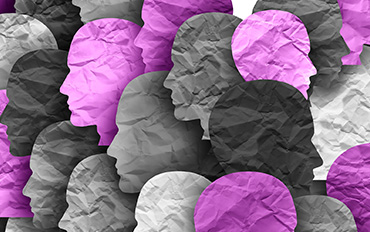When I first began my training in marriage and family therapy, one question kept echoing in my mind: How would Ethiopian families respond to therapy?
As an Ethiopian, I know how deeply our lives are shaped by religion, tradition, and collectivism. In our culture, it is not natural to share intimate details with an outsider, especially about family struggles. The idea of vulnerability with a stranger feels unsettling. And yet, I also know that Ethiopians already engage in practices that look remarkably similar to what therapy provides—listening, validation, guidance, and healing.
The buna (coffee) ceremony
Every day in Ethiopian households, the buna (coffee) ceremony gathers people together. The youngest daughter roasts beans over a small charcoal fire, pours steaming coffee into tiny cups, and family members or neighbors sit and talk.
Stories flow: a complaint about rising food prices, frustration with a child, or a joyful announcement. People laugh, nod, and make noises to show they’re listening. There is empathy, problem-solving, and relief. It feels a lot like group therapy, only no one calls it that.
The role of elders (shemagele)
When marriages are in trouble, couples turn to shemagele—respected elders of the community. They listen, weigh in, and often issue a directive: one spouse must apologize, or the couple must try again to reconcile. Unlike couples therapy, the goal is not neutrality but restoring the marriage and preserving family honor. Still, the parallels are there: conflict resolution, accountability, and healing through dialogue.
The confession priest (neseha abat)
In the Ethiopian Orthodox Church, confession to a neseha abat (priest) is a way of unburdening the soul. People share their darkest secrets, receive guidance, and walk away feeling lighter; forgiven. The act of speaking to a trusted outsider about private struggles is ancient in Ethiopia—it simply takes a different form.
What this means for therapists
For therapists working with Ethiopians—whether in Ethiopia or in the diaspora—these traditions matter. Therapy may feel foreign when presented as a Western practice, but when framed as something that resonates with existing cultural ways of healing, families may become more open.
The buna ceremony, the wisdom of elders, and the confessional tradition show that Ethiopians already believe in talking, listening, and finding solutions together. By meeting clients where they are culturally, we can help them see therapy not as a foreign import, but as an extension of what they already know.
The lesson is simple: if we want cultures like mine to embrace therapy, we must begin by honoring what is already there.

Bethelheim Haileyesus is a marriage and family therapy master’s student at Capella University. She studied Medicine at Addis Ababa University before moving to the United States in 2017, where she continues to pursue her passion for culturally inclusive approaches to mental health. Her work bridges Ethiopian traditions with therapeutic practices, aiming to make therapy more accessible and resonant for diverse communities. Haileyesus is a Student member of AAMFT.
Other articles
This Is What Happens When Therapists Don’t Understand Asexuality
The problem my husband and I had was, admittedly, a tricky one. I had always been disinterested in sex ever since my high school years—it didn’t make sense to me, I had no need for it, and I never enjoyed it—but, 9 years into our marriage, that disinterest had developed into a deep repulsion. After some sleuthing on the internet which led me to the Asexuality and Visibility Education Network (AVEN), I figured out I was asexual.
Debbie Urbanski
An Open Letter to Hopelessness
You arrive uninvited and begin to tally every crisis, stacking them up as evidence that our efforts are futile, certainly too small. You loudly proclaim: “These problems are too big and your resources are too few to change all the pain and suffering of the world. What in the world were you thinking? Oh, my mistake. You weren’t. That’s why I need to be here with you.”
Danna Abraham, PhD & Kaethe Weingarten, PhD
The Myopia of the DSM
To name something—to separate it from the rest of existence—and label it, is a foundational act. It is the beginning of understanding and control. In Genesis, the first thing God did in splitting light from darkness was to call the day light and the darkness night. Then, let loose in the Garden of Eden, Adam set out naming God’s creatures. In many ways, it could be said that Adam was humanity’s first label maker (Singh, 2024).
H. Charles Fishman, MD & Misti Sparks, PhD



